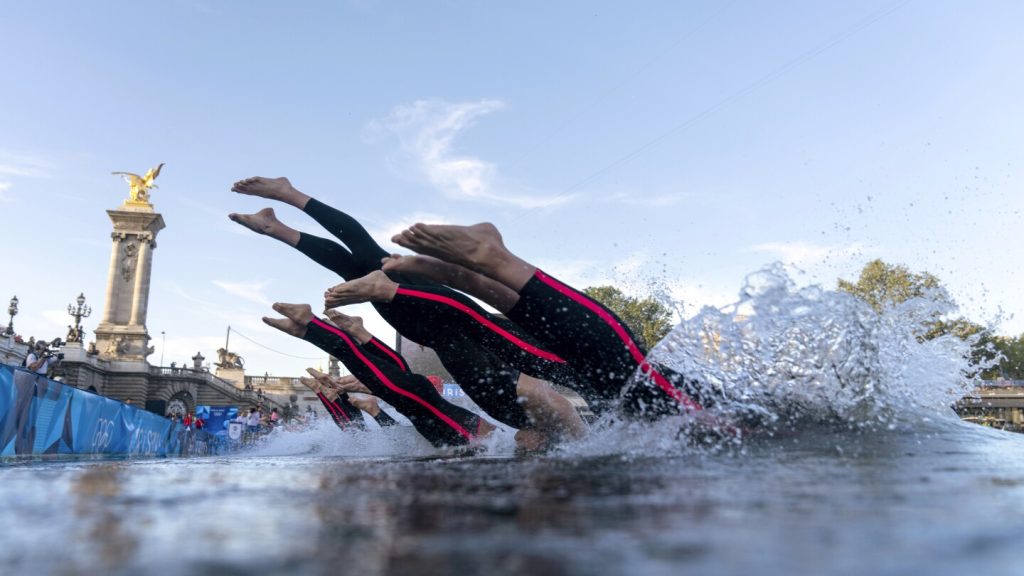Water quality data used by Paris Olympics organizers showed that bacteria levels in the Seine River were within acceptable levels on days when athletes swam in the waterway, according to tests and thresholds. Daily tests conducted involved water samples taken at four points in the river two or three times daily, spanning a period from July 19 to the women’s marathon swim, and revealed that the river has been contaminated for many days after heavy rainfall. Paris spent 1.4 billion euros on infrastructure improvements to allow Olympic events to be held in the Seine, with officials claiming success after the competitions proceeded largely as planned.
The data showed that levels of E. coli and enterococci bacteria exceeded acceptable levels for competition on many days, particularly after heavy rainfall. This has raised concerns about Paris’ plans to allow the public to swim in the river starting next summer. Weather plays a significant role in the Seine’s cleanliness, with rainfall causing runoff and wastewater to flow into the river, while warm temperatures and UV rays can kill germs. The cancellation of test runs and delays in events due to elevated bacteria levels following downpours highlighted the influence of weather on water quality, yet Olympic events were ultimately held as scheduled.
Several athletes who swam in the Seine reported gastrointestinal illnesses post-event, though it wasn’t confirmed whether bacteria in the water were the cause. Notable downpours during the Games’ opening ceremony and the triathlon competitions led to a significant increase in bacteria levels, taking days to return below acceptable levels. The disparities in bacteria levels across testing sites illustrate the variability in water quality, with some sites showing acceptable levels for specific events despite others being above the standard. The rapid fluctuations in bacteria levels emphasize the need for ongoing monitoring and assessment of water quality for public safety.
Guidelines set by World Triathlon and World Aquatics allow for up to 1,000 colony-forming units of E. coli and 400 colony-forming units of enterococci per 100 milliliters for “good” water quality. Despite the potential harm caused by certain strains of E. coli and enterococci, most are harmless, indicating that exposure to contaminated water doesn’t always result in illness. Age and general health play a significant role in determining the impact of waterborne bacteria on individuals. The data suggests the importance of prioritizing public health and safety in developing long-term plans for the Seine River, especially with the goal of allowing swimming in the waterway for the public in the near future.
Overall, the water quality data obtained during the Paris Olympics provides valuable insights into the challenges faced in maintaining clean conditions in the Seine River. Despite efforts to improve water quality through infrastructure upgrades, the impact of weather on bacteria levels highlights the need for ongoing monitoring and precautions to ensure the safety of athletes and the public. As Paris aims to allow swimming in the river starting next summer, the data serves as a reminder of the importance of sustainable practices in managing water quality for recreational and competitive purposes. The discrepancies in bacteria levels between testing sites underscore the complexity of maintaining clean water, calling for continued research and measures to protect the health of individuals utilizing the Seine River.


